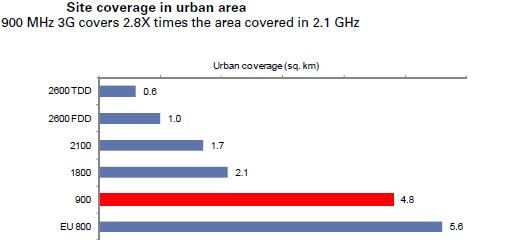 Many have asked what is Spectrum Re-farming ? What is the Significance and benefits of the Same ? Today we’ll try to answer as much as possible in the context of Indian Wireless Industry.
Many have asked what is Spectrum Re-farming ? What is the Significance and benefits of the Same ? Today we’ll try to answer as much as possible in the context of Indian Wireless Industry.
In plain language, Spectrum refarming is nothing but reallocation of existing telecom spectrum. It is defined as a basic change in conditions of frequency usage, which may be driven by:
- Change of technical conditions for frequency assignments (sometimes to follow an international standard)
- Change of applications deployedo n wireless spetrum
- Change of allocation to a different service. Some regulators define refarming as allocation of spectrum from one operator to another.
What is the Significance of Spectrum Re-Farming ? With advances in the Telecom industry, 900MHz spectrum which was earlier used for 2G Voice is now ideal for 3G data Services. Operators/regulators are keen to use the band to rollout 3G (currently used for 2G) over the traditional 2.1 GHz band as it will help the operators reduce OPEX & CAPEX.
Benefits of Spectrum Refarming
By reusing its existing spectrum, the demand for new spectrum reduces (and operators can reduce initial capital committed to purchase new licenses). Operators can use existing assets for a longer time span.
The following chart shows the comparison of coverage of 3G Reach under various bands of Spectrum. It maybe a little lesser in context of Indian Urban areas which are densely populated compared to that of Europe.

- By using 900MHz for 3G Data Services, the CAPEX / OPEX can be reduced by 50% when compared to that of 2.1 GHz band depending on mix of Voice and Data Services that operator will deploy. Cost cost saving is certain 🙂
- 3G on 900 MHz is attractive for deployment of wireless broadband service in scarcely populated areas like rural India.
- By overlaying a 900 MHz 3G on an existing 2.1 GHz network, operators can fill the gaps/ dark spots in urban areas which were not covered by their 2.1 GHz 3G network
- Operators can reuse many of their existing 2G network equipment like antennas, network management systems, thus reducing the cost of 3G rollout for an existing 2G operator.
Drawbacks or Hurdles in 900 MHz Refarming
- India has a high proportion of 2G subscribers being serviced over 900 MHz.
- Operators are reluctant to refarm even a 5 MHz band on 900 MHz as their 2G capacity utilization would materially increase, leading to congestion issues on their networks. In such a scenario, operators would have to spend more for cell-splitting and/or migrating subs to 1800 MHz (if they have this spectrum) to reduce the network congestion.
- An estimated 20%-25% of the total handsets today can work on 900 MHz 3G with majority of them being high-end. Given the non availability of low cost 900 MHz 3G handsets, emerging market operators are unwilling to refarm this spectrum as they cannot migrate all their existing 2G subs to 3G.
In the next article we will Analyze why Indian Regulator is pushing for Spectrum Refarming and the Implications of the same on the Indian Telecom Industry.
1 thought on “What is Spectrum Refarming ? Benefits + Drawbacks of Spectrum Refarming”
Comments are closed.